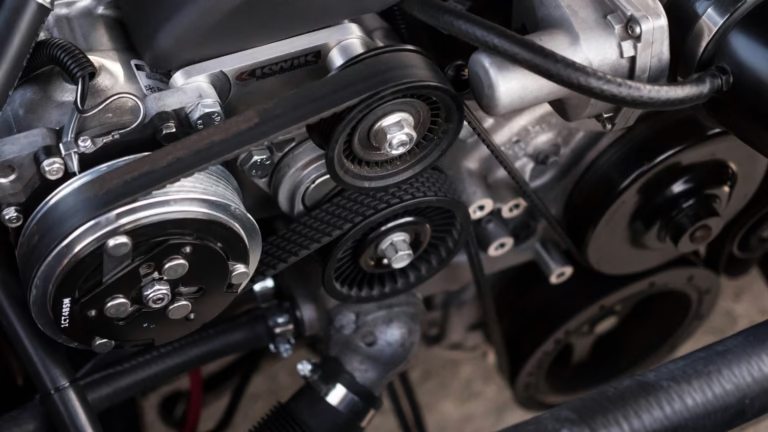
🚗 Introduction
Mercedes-Benz vehicles are known for their performance, comfort, and engineering precision. But like all cars, they require regular maintenance—especially when it comes to the brake system.
Over time, your brake pads wear down and need to be replaced to maintain stopping power and ensure your safety. Ignoring worn pads can damage your rotors and lead to expensive repairs.
The good news? You don’t need to visit a dealership or pay a mechanic $300+ to do this job. With a few tools and some time, you can replace the brake pads on your Mercedes at home.
🔧 Tools & Materials You’ll Need
- Replacement brake pads (OEM or trusted aftermarket brand)
- Car jack and jack stands or ramps
- Lug wrench
- Socket set with ratchet
- Torque wrench
- C-clamp or disc brake tool
- Flathead screwdriver
- Brake cleaner spray
- Protective gloves
- Safety glasses
- Optional: Anti-squeal grease, wire brush
⚠️ Signs You Need New Brake Pads
Before starting, check whether your Mercedes truly needs new brake pads. Watch for these symptoms:
- Squeaking or grinding noise when braking
- Brake warning light on dashboard
- Increased stopping distance
- Soft brake pedal feel
- Brake pad thickness below 3mm
- Vibrations or shuddering while braking
✅ Step-by-Step Mercedes Brake Pad Replacement
Step 1: Park Safely & Prepare the Vehicle
- Park on a flat surface.
- Engage the parking brake.
- Loosen lug nuts on the wheels (do not fully remove).
- Jack the car up using proper jack points.
- Secure the vehicle with jack stands.
- Remove the wheels.
🛠 Tip: Refer to your owner’s manual for jack point locations.
Step 2: Locate the Brake Caliper
Once the wheel is off, you’ll see the brake caliper mounted over the rotor.
- Look for two bolts holding the caliper to the bracket.
- These may be hidden behind rubber dust caps.
Step 3: Remove the Caliper
- Use your socket and ratchet to unscrew the bolts.
- Carefully lift the caliper off the rotor.
- Do not let it dangle from the brake hose.
- Use a wire or bungee cord to hang the caliper from the suspension.
Step 4: Remove Old Brake Pads
- Slide the old brake pads out of the caliper bracket.
- Inspect them to confirm uneven wear or damage.
- Take note of the pad orientation for reinstallation.
Step 5: Compress the Brake Caliper Piston
- Use a C-clamp or brake tool to compress the piston back into the caliper.
- Place an old pad over the piston face to distribute pressure evenly.
- Go slowly to avoid damaging the piston seals.
🛠 Why? This step makes room for the thicker, new pads.
Step 6: Install the New Brake Pads
- Apply anti-squeal grease to the back of each pad (not on the surface that contacts the rotor).
- Slide the new pads into place, matching the orientation of the old ones.
- Ensure they’re snug in the bracket.
Step 7: Reinstall the Caliper
- Slide the caliper back over the new pads.
- Insert and tighten the bolts to manufacturer torque specs.
- Double-check everything is tight and aligned.
Step 8: Reinstall the Wheel
- Reattach the wheel and hand-tighten the lug nuts.
- Lower the vehicle back to the ground.
- Torque the lug nuts in a crisscross pattern to the correct setting.
Step 9: Pump the Brake Pedal
- Before driving, pump the brake pedal several times until it feels firm.
- This seats the pads against the rotors and ensures proper function.
💸 DIY vs Shop Cost Comparison
| Task | Shop Price | DIY Price |
|---|---|---|
| Brake pad replacement (1 axle) | $250–$500 | $50–$150 |
| Labor included | Yes | No (your time) |
| Savings | — | $200–$350+ |
Doing it yourself gives you full control over quality and saves you hundreds of dollars.
🚘 Applicable Mercedes Models
This guide applies to most recent and older models including:
- Mercedes C-Class (W204, W205, W206)
- Mercedes E-Class (W212, W213)
- Mercedes GLC and GLE
- Mercedes A-Class, CLA, and GLA
- Mercedes ML-Class
- S-Class (with minor variations)
⚠️ Note: Some AMG or performance models may require different procedures or special tools.
🧼 Pro Tips for Better Results
- Change pads on both wheels of the same axle to maintain even braking.
- Use brake cleaner to clean the rotor surface before reassembly.
- Avoid touching pad or rotor friction surfaces with your bare hands.
- Test drive after installation and listen for abnormal noises.
- If replacing rear brake pads, you may need to release the electronic parking brake (check owner’s manual).
🔄 How Often Should You Replace Brake Pads?
On average:
- Front brake pads: Every 25,000 – 40,000 miles
- Rear brake pads: Every 40,000 – 60,000 miles
This depends on your driving habits, terrain, and pad quality.




